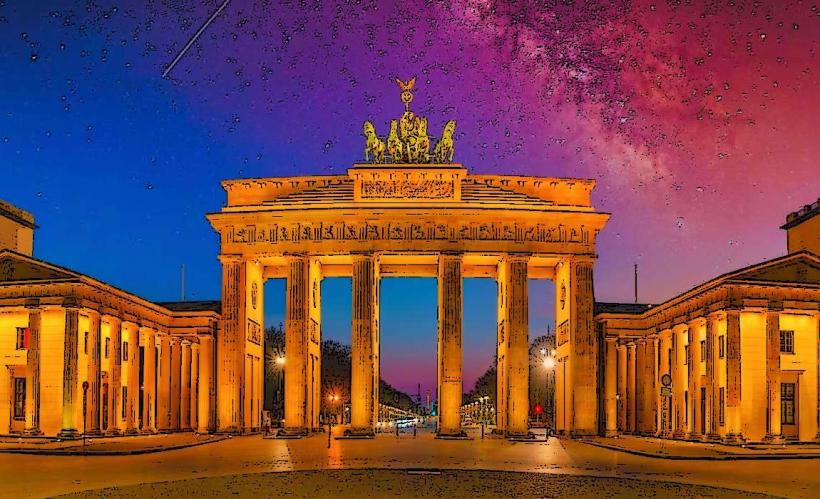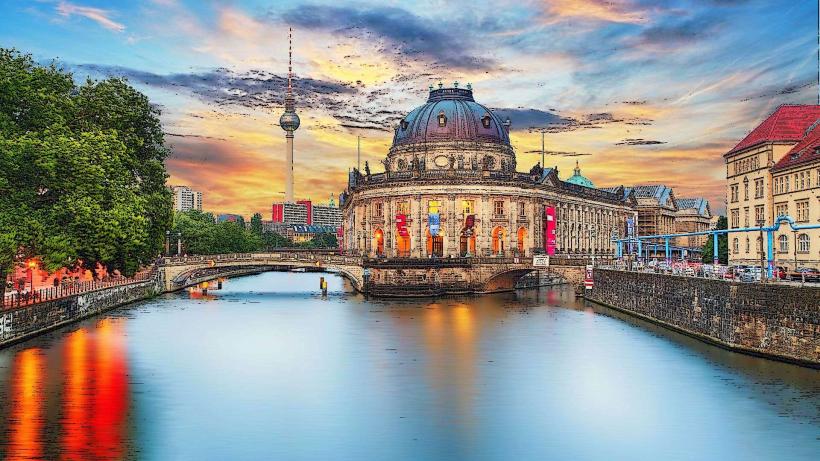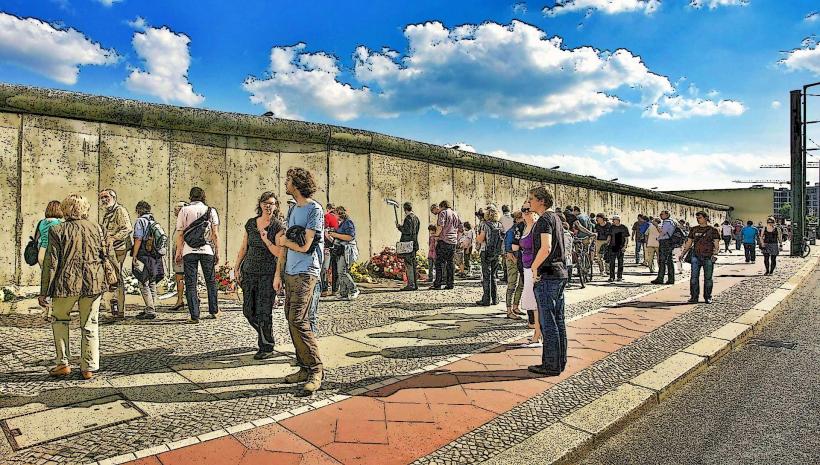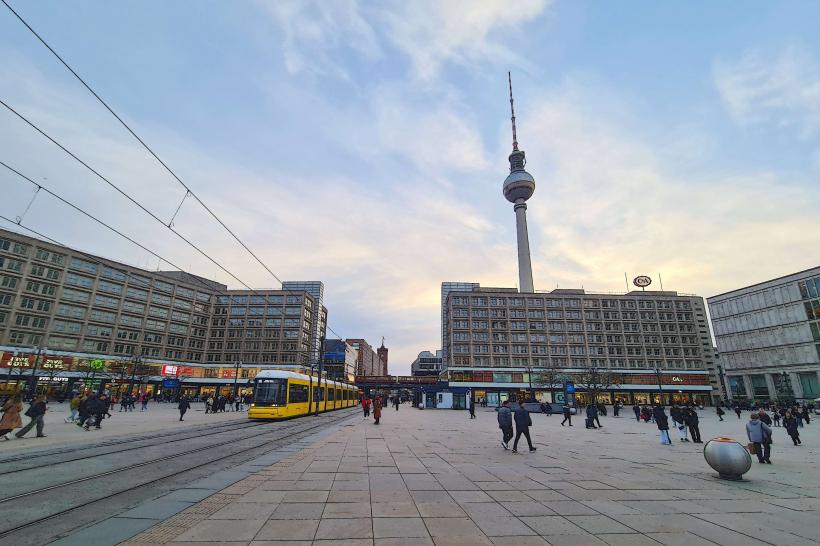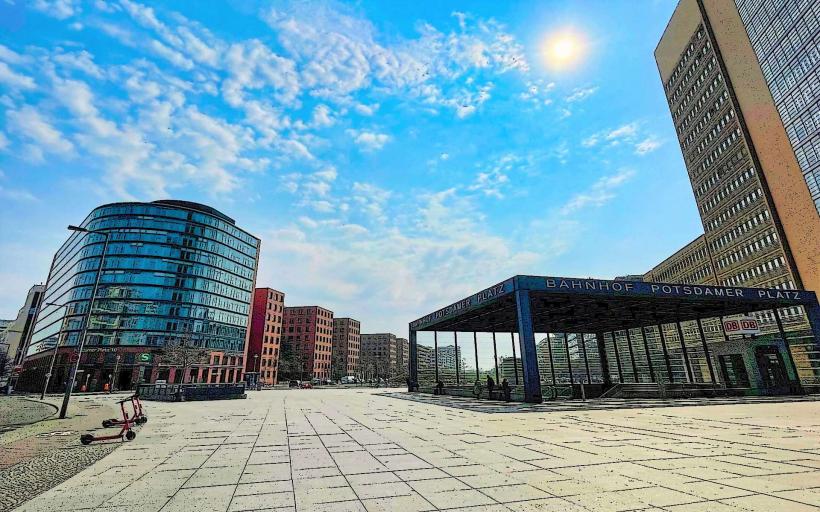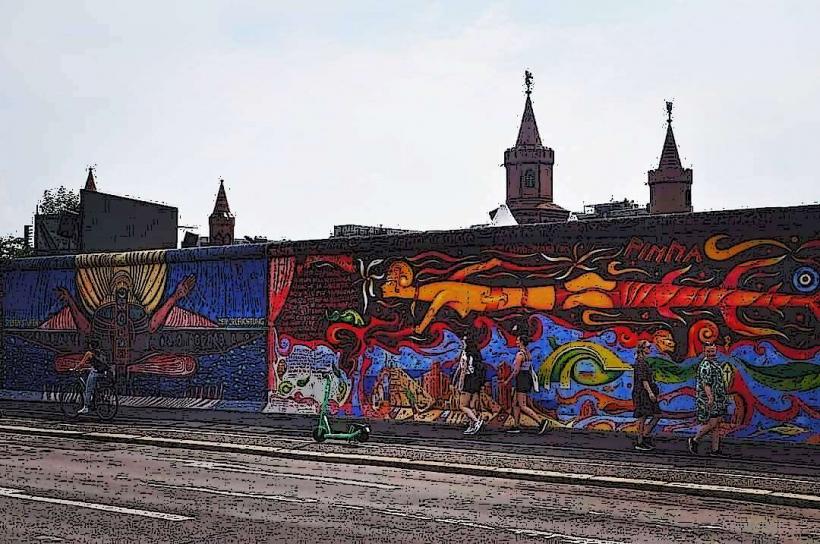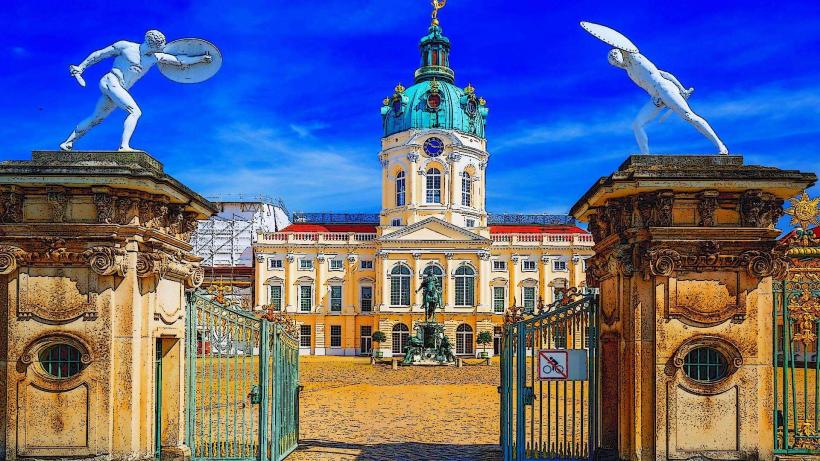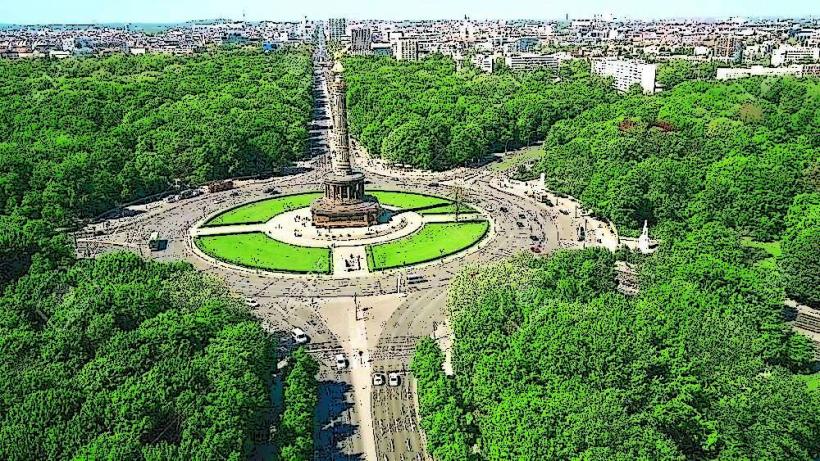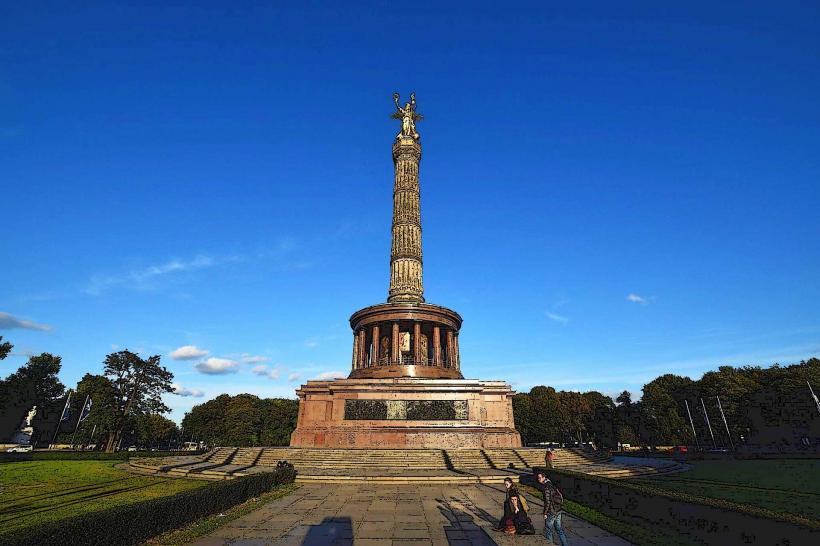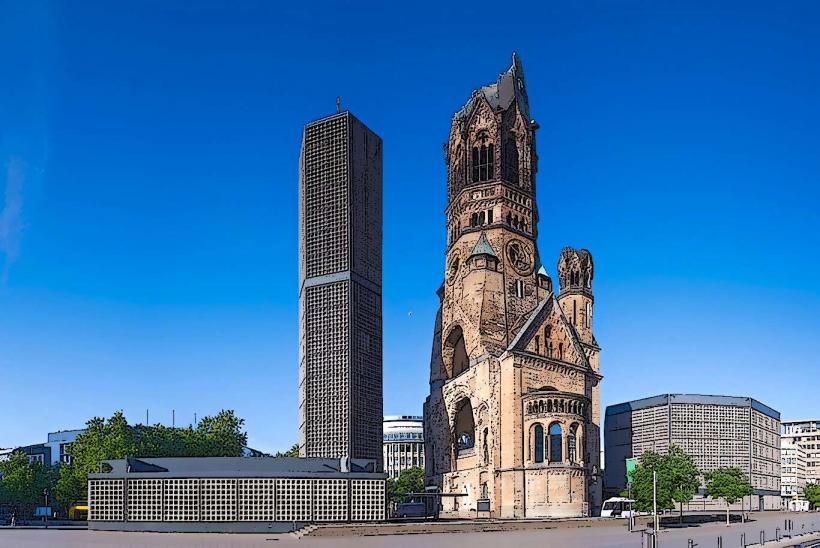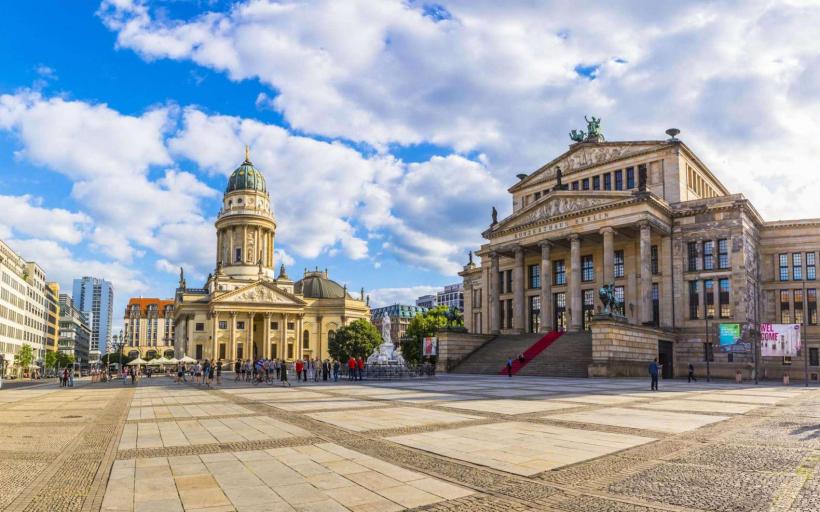Information
Landmark: Berlin TV TowerCity: Berlin
Country: Germany
Continent: Europe
The Berlin TV Tower (Berliner Fernsehturm) is one of Berlin’s most iconic landmarks and is an essential part of the city’s skyline. Standing at 368 meters (1,207 feet), it is the tallest structure in Germany and one of the tallest television towers in Europe. The tower offers breathtaking views of the city, a rich historical context, and is a symbol of Berlin’s post-war reconstruction and modernity.
1. History and Construction
- Construction Era: The Berlin TV Tower was constructed between 1965 and 1969 by the German Democratic Republic (GDR), also known as East Germany. The tower was built to improve radio and television signal coverage in East Berlin and the surrounding areas, which were difficult to reach due to the surrounding geography and the limitations of existing broadcast towers.
- Political Symbol: The tower was designed as a symbol of the strength and modernity of the socialist East Germany and was strategically located in East Berlin. It became an emblem of the GDR's technological advancement during the Cold War. The location was also significant because it provided the East German government with a means to showcase its achievements to the world during a time of division.
- Architectural Design: The tower was designed by the East German architect Heinrich L. M. Schirmer, and its construction was overseen by the company VEB Fernmeldebau. The tower was built in a modern, minimalist style, with a concrete shaft topped by a spherical observation and broadcast platform.
2. Structural Features
- Height: At 368 meters, the Berlin TV Tower is not only the tallest structure in Berlin but also the tallest in Germany. Its observation deck, located at 203 meters, provides panoramic views over the city, offering a unique perspective of Berlin’s historic and modern landscapes.
- The Sphere: The sphere of the tower is what makes the structure so recognizable. It houses an observation deck, a rotating restaurant, and broadcasting equipment. The spherical design was intended to reflect the modernity and futuristic vision of the GDR.
- Observation Deck: The observation deck at 203 meters offers an exceptional 360-degree view of Berlin. On clear days, visitors can see as far as Potsdam to the southwest and even Sachsen to the northeast. It is a popular spot for tourists, offering a unique aerial view of the city, including notable landmarks such as the Brandenburg Gate, Reichstag, Alexanderplatz, and the Berlin Cathedral.
- Rotating Restaurant: The Sphere Restaurant (formerly known as "Restaurant Drehrestaurant") is located at 207 meters and provides a unique dining experience. The restaurant slowly revolves, giving diners a constantly changing view of the city while they enjoy their meals. The rotation takes about 30 minutes for a full circle.
- Broadcasting: The Berlin TV Tower is primarily a telecommunications tower, providing broadcast signals for television and radio. It was initially built to accommodate East German television broadcasts, and it remains an important part of Berlin’s media infrastructure.
3. Tourism and Attractions
- Panoramic Views: The observation deck is the main attraction for visitors. It offers breathtaking views of Berlin's cityscape, with clear views of Tiergarten, the Berlin Wall Memorial, and the Spree River. Visitors can also get a bird’s-eye view of the surrounding neighborhoods, like Mitte and Friedrichshain.
- Berlin TV Tower Website: Tickets can be purchased in advance for the observation deck and restaurant experience, and there are often special events and exhibits that focus on the history of the tower and its place in Berlin’s cultural and architectural history.
- 360° Cinema: The TV Tower offers a 360° cinema experience, where visitors can learn about the tower's history, Berlin's urban development, and the architectural and technical challenges involved in its construction.
4. Cultural and Historical Significance
- Symbol of East Berlin: During the Cold War, the Berlin TV Tower became a prominent symbol of East Berlin and socialist ideals. It was part of a broader effort to demonstrate East Germany's technological prowess to the rest of the world.
- The "Ball" as a Communist Symbol: The sphere atop the tower, in the context of East German architecture, was often seen as a sign of modernity and ambition. However, some critics and historians later pointed out the symbolic meaning of the tower's height and its prominence as a representation of the state's authority.
- Fall of the Berlin Wall: After the fall of the Berlin Wall in 1989, the TV Tower retained its significance as a symbol of Berlin’s unity and reunification. It continues to be a key feature of Berlin’s skyline, representing both the city’s past and its future.
5. Post-Reunification and Modern Use
- Renovation: After Germany's reunification, the Berlin TV Tower was renovated and modernized to meet the needs of a unified Berlin. The interior of the restaurant and the observation deck were updated, and the technology for broadcasting signals was upgraded.
- Tourism Growth: Today, the Berlin TV Tower is one of the most popular tourist attractions in Berlin, with over 1 million visitors annually. The iconic structure offers not only a historical perspective but also modern attractions, such as the revolving restaurant and the 360-degree views of Berlin’s urban landscape.
- Panoramic Experience: A visit to the observation deck is particularly memorable at sunset or at night, when the city is illuminated, and the view is absolutely stunning. During the night, the tower is beautifully lit up, adding to the appeal of the area.
6. Lighting and Nighttime View
- Nighttime Illumination: The Berlin TV Tower is illuminated each night, with lighting that changes according to different events or times of the year. The lights give the tower a distinct look at night, making it one of the most recognizable landmarks in the Berlin skyline.
- Event Celebrations: The TV Tower also serves as a backdrop for special events, including New Year’s Eve celebrations in Berlin, where it plays a part in the fireworks display over the city. The tower is often bathed in special lighting during holidays or cultural events.
7. Interesting Facts
- Tallest Structure in Germany: At 368 meters, the Berlin TV Tower is not just the tallest structure in Berlin but also the tallest in Germany.
- Radio Signal Obstructions: The design of the Berlin TV Tower was intended to overcome the problem of signal interference caused by Berlin’s many tall buildings. The tower’s height made it possible to broadcast signals across a much larger area.
- Original Design Controversy: The tower’s design was initially controversial in the 1960s, as many people felt the modern style of the tower did not fit with the existing architecture of the city. However, over time, it became an integral part of the Berlin skyline.
8. Accessibility
- Location: The Berlin TV Tower is located at Alexanderplatz, one of Berlin’s central squares. It’s easily accessible via the U-Bahn, S-Bahn, and various bus routes, making it convenient for both tourists and locals to visit.
- Ticketing: Tickets can be purchased for entry to the observation deck or the rotating restaurant. Advance booking is often recommended, especially during peak tourist seasons, to avoid long wait times.
- Elevator Ride: Visitors to the observation deck take a high-speed elevator to the top, which takes only about 40 seconds. Once at the top, the views of the city and surrounding areas are expansive.
9. Conclusion
The Berlin TV Tower is more than just a broadcast tower—it's a symbol of Berlin's modernity, a historical landmark, and a tourist attraction that offers some of the best views of the city. Whether you’re interested in its architectural significance, its place in Berlin’s political history, or simply want to enjoy panoramic views, the TV Tower is a must-visit site. Its prominence in the cityscape, its fascinating history, and its role in Berlin’s reunification make it an unforgettable part of any trip to Berlin.

